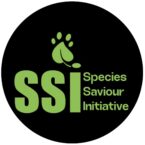Mission-Driven Approach
We are dedicated to conserving Frankincense and Dracaena ombet along with their associated wildlife, while empowering local communities in Puntland State, Somalia.
Our collaborative and participatory approach focuses on integrating environmental, social, and economic sustainability to achieve long-term impacts. During the initial stages of project development, we engage with local and regional stakeholders to assess species conservation status, and socio-economic and environmental conditions. This allows us to identify opportunities and co-develop solutions with specialists in environmental conservation, public health, eco-agriculture, and community development.
Working closely with local communities and a cross-sectoral team of stakeholders, our initiatives rely on community engagement, indigenous knowledge, and local innovation. By applying an integrated framework that connects environmental sustainability with socio-economic resilience, our work addresses issues related to species conservation, livelihoods, and broader ecosystem health.


1. Collaborative Stakeholder Engagement
Participatory Planning – With the help of our on-site collaborators and the participating community, we endeavor to develop a clear understanding of the stakeholder landscape, forest health and species conservation statues. Through interviews, meetings, and presentations, we balance the interests of relevant parties at the local, regional, and national levels to create integrative solutions through enduring, cross-cutting partnerships. This also establish networks among frankincense traders, conservationists, and community members to share insights and best practices.
2. Evidence-Based Research and Monitoring
• Data Collection – Conduct ecological assessments and socio-economic surveys to gather baseline data on species populations, forest health, and community livelihoods.
• Needs Assessment – prior implementation stage of our project, We conduct a participatory rural appraisal to determine what is working and what is not working in terms of current systems, practices, and traditions that directly or indirectly affect the animal-human-environmental relationship.
3. Adaptive Management and Learning
• Iterative Evaluation- Continuously refine our methodologies through impact assessments and stakeholder feedback loops.
• Dynamic Solutions – Adapt strategies based on changing environmental conditions and community needs, ensuring long-term project sustainability.
4. Capacity Strengthening and Knowledge Sharing
• Local Empowerment Prioritize training in sustainable practices and governance, ensuring local ownership and resilience.
• Knowledge Co-Creation – Blend traditional ecological knowledge with modern scientific insights to develop innovative conservation solutions.
